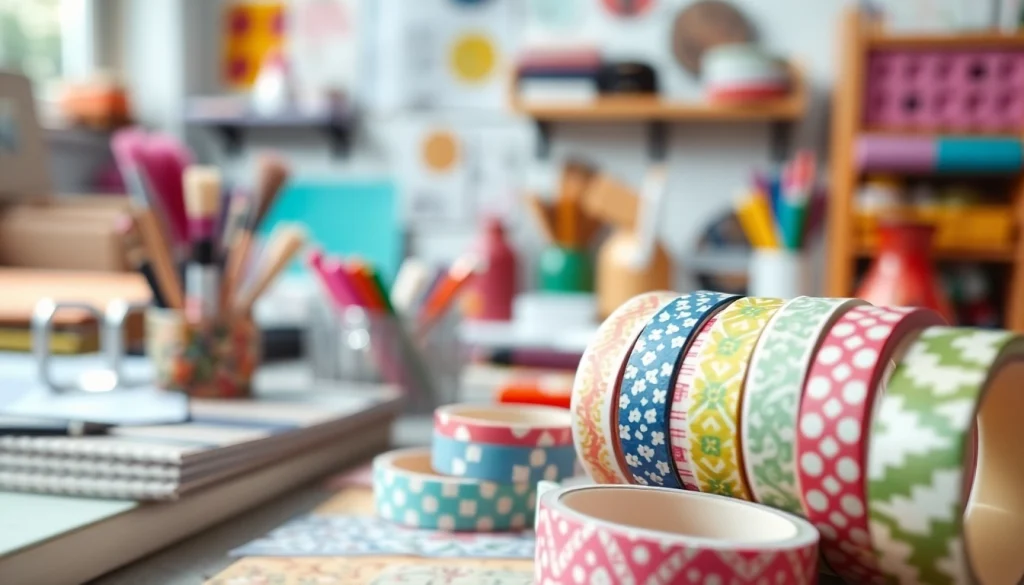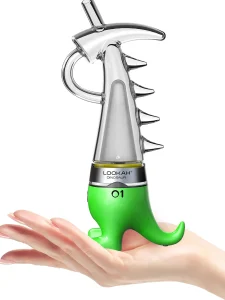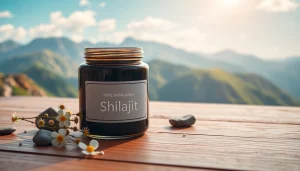Creative Applications of Washi Tape: Enhance Your Craft Projects

What is Washi Tape?
Washi tape is a decorative adhesive tape that originates from Japan, known for its creative designs and versatile applications. Made from washi paper—an environmentally sustainable paper that’s thin yet strong—washi tape is semi-transparent and can easily be torn by hand. The unique texture and aesthetic appeal make washi tape a popular choice for various crafting projects, home decor, and even decorating personal items like journals and planners. The growing popularity of washi tape is a testament to its functional yet stylish capabilities.
Origins and History of Washi Tape
Washi tape has a rich history dating back to the era of traditional Japanese papermaking. The term ‘washi’ translates to “Japanese paper,” which highlights its cultural significance. Traditionally, washi was made using the fibers of the mulberry tree, rice straw, or wheat, providing a sturdy yet flexible product suitable for various applications, including calligraphy and printing.
The creation of decorative washi tape as we know it today began around the 1980s, driven by the desire for a versatile, artistic medium in stationery and crafts. Over decades, it transformed from a niche product into a must-have item for hobbyists worldwide, opening doors to countless creative possibilities.
Materials Used in Making Washi Tape
True to its heritage, authentic washi tape is typically made from natural fibers. The primary materials include:
- Kozo: This is the most common material used for washi production, derived from the mulberry tree. It lends a soft texture and excellent durability to the tape.
- Synthetic fibers: Some modern washi tapes incorporate synthetic components to enhance usability and print quality. While these may not provide the same traditional feel, they often feature vibrant colors and patterns.
- Natural dyes: Many designs draw on natural pigments and dyes, ensuring that the tapes are safe for crafts, particularly those aimed at children.
Diverse Patterns and Designs
One of the fiercest attractions of washi tape is the almost limitless variety of patterns, designs, and colors available in the market today. From classic floral prints and minimalist geometrics to modern illustrations and seasonal themes, there’s sure to be a roll for every occasion and artistic inclination. This diversity enables crafters to personalize their creations significantly, turning even the simplest project into a statement piece.
Popular Uses of Washi Tape
Decorating Journals and Scrapbooks
One of the most celebrated uses for washi tape is in journaling and scrapbooking. The flexibility and decorative nature of the tape make it an ideal choice for embellishing pages and providing a visual narrative. Crafters can use washi tape:
- To create borders: Using washi tape as borders for photographs or journal entries adds a splash of color and visual intrigue.
- To make dividers: Sections in a journal can be distinguished easily with washi tape, creating a neat and organized appearance.
- As decorative accents: Applying small pieces of tape can enhance the overall aesthetic without overwhelming the message or design.
Crafting Unique Gift Wrapping
Gift wrapping can elevate the experience of giving and receiving presents. Washi tape can replace traditional wrapping supplies such as ribbons, stickers, and even the tape itself, contributing to a unique presentation. Here are a few creative wrapping ideas:
- Decorative labels: Use washi tape to make unique gift tags by writing names and messages directly on it.
- Layering: Combine different patterns of washi tape to create visually captivating layers on a gift.
- Closure: Replace traditional tape used for sealing packages with a beautiful washi tape closure.
Creating Home Decor Elements
Washi tape isn’t limited to paper; its applications in home decor have gained significant traction. Here are some innovative ways to use washi tape around the house:
- Wall borders: Create artistic expressions on walls, without the commitment of permanent wallpaper.
- Picture frames: Use washi tape to customize photo frames, adding a personal touch to your home.
- Candle holders: Wrap washi tape around plain candle holders to introduce color and patterns into your living space.
How to Choose the Right Washi Tape
Considering Quality and Adhesiveness
When selecting washi tape, quality and adhesive strength are critical factors that impact how effectively the tape can be used in various applications. High-quality washi tape should:
- Have strong adhesion yet be easily removable, allowing flexibility in repositioning without damaging surfaces.
- Be durable enough to maintain structure without tearing during application.
- Feature vibrant and fade-resistant prints that hold their appearance over time.
Match Your Project Needs
The choice of washi tape should align with the nature of your project:
- For journaling: You might prefer thinner tapes with intricate patterns.
- For gift wrapping: Choose broader tape that features eye-catching designs.
- For decor: Consider tapes with strong adhesive properties that can withstand being placed on walls or furniture.
Best Retailers for Washi Tape
Various online and physical retailers cater to washi tape enthusiasts. Sites like Amazon, Etsy, and specialized craft stores often offer a wide selection. Some notable mentions include:
- Vograce: Known for custom washi tape options, enabling unique designs.
- The Washi Tape Shop: A great selection of artistically designed washi tape.
- Michaels and Joann: Physical craft stores that frequently have seasonal washi tape collections.
Creative Ideas for Using Washi Tape
DIY Projects for All Skill Levels
Washi tape is popular for DIY projects that can be tailored to all crafting skill levels. Here are a few ideas to consider:
- Bookmarks: Create personalized bookmarks by cutting strips of cardstock and decorating them with washi tape.
- Custom Magnets: Adorn plain magnets with washi tape to give them a unique flair and style.
- Small Artworks: Frame washi tape designs in shadow boxes as a simple art installation.
Combining Washi Tape with Other Craft Supplies
Pairing washi tape with other supplies can enhance creativity and allow for endless design combinations. Consider:
- Stickers: Use washi tape along with stickers for added texture on planner pages or scrapbook layouts.
- Markers and stamps: Incorporate various colors and designs with markers or stamps to create layered effects.
- Paint: Combine washi tape with paint to create patterns and textures on canvases or furniture.
Innovative Techniques to Try
Explore various techniques to elevate your crafting game with washi tape. Some innovative methods include:
- Layering: Tape can be layered to create depth and interest in your designs.
- Watercolor effects: Use washi tape to block sections of watercolor projects or journal pages, then paint around the tape.
- Creating stencils: Cut washi tape into shapes to create stencils for more complex designs.
Care and Storage of Washi Tape
Best Practices for Longevity
To ensure your washi tape lasts, consider these practices:
- Store them away from direct sunlight to prevent fading.
- Keep them in a cool, dry place to preserve the adhesive quality.
- Place rolls upright rather than stacked to prevent flattening.
Organizing Your Washi Tape Collection
An organized collection makes it easier to find and use different tapes for projects. Here are some methods to keep your washi tape handy:
- Storage bins or boxes: Use labeled bins to categorize washi tape by color, size, or theme.
- Display racks: Consider a display rack or wall-mounted organizer to showcase your collection.
- Binder method: Store smaller rolls in a binder with clear pockets for easy access.
Dealing with Adhesive Issues
Adhesive issues can arise with older rolls of washi tape. If your washi tape starts losing its stickiness:
- Try rubbing alcohol to clean the adhesive surface and restore some of its tack.
- Consider layering it on top of other adhesive products such as glue or adhesive dots.
- Use double-sided tape beneath older washi tape to enhance adhesion.






